Continuing our Flower Power series….Salal
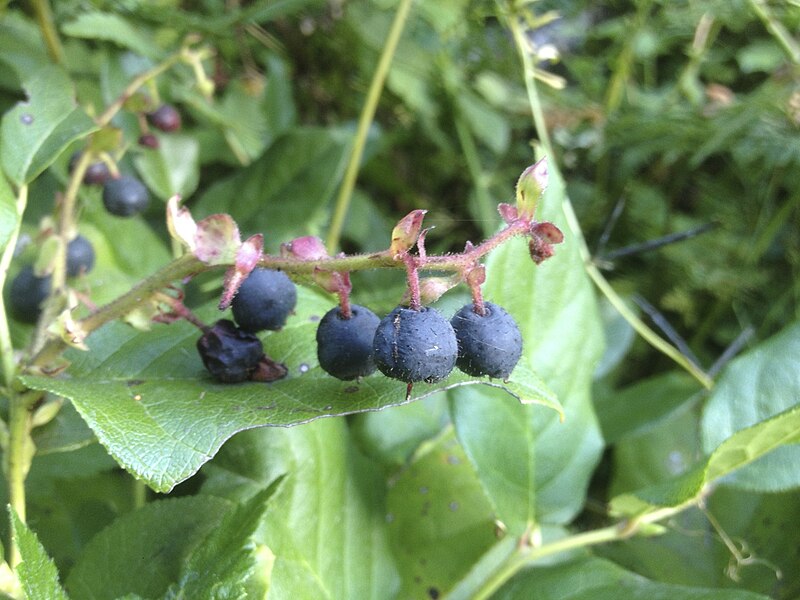
Salal is the common name of Gaultheria shallon, a versatile evergreen shrub from the heather family (Ericaceae). Some of its close relations are cranberry, blueberry, huckleberry and rhododendron. There are a whopping 175 species worldwide but only half a dozen are native to North America. Salal can be found on the Pacific coast from Southeastern Alaska to central California, mostly west of the Cascade Mountains and along the California coast.
Another name for Salal is Oregon Wintergreen, although it’s the eastern relative, Gaultheria procumbens (or Wintergreen) that is the original and traditional source of wintergreen flavoring. Salal does grow slowly, but it can reach up to 5 feet tall and spread about 6 feet wide in shady conditions (about half that if the conditions are sunny). Salal spreads by sprouting from underground stems.
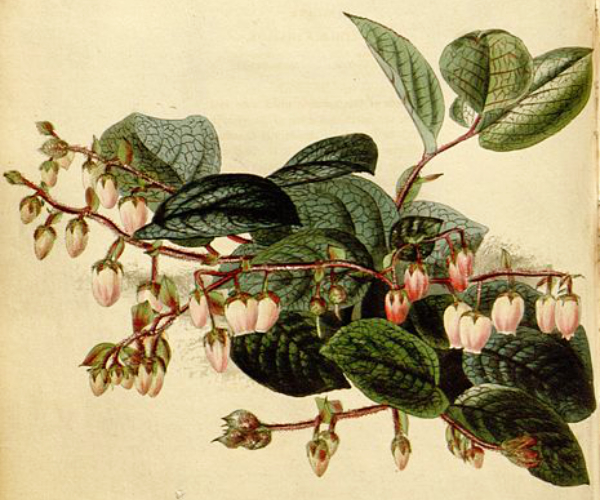
The botanical name for Salal, Gaultheria shallon, evolved from the Chinook word “kl-kwu-shá-la”. In the Lushootseed language (a Central Coast Salish language) their word for August “pədt̕aqaʔ” literally translates to “time of the salal”, honoring the time the berries ripen.
February 8, 1803, the first recorded entry of Salal came from the Lewis and Clark expedition who described it: “very thick and is from the size of a goose quill to a man’s thumb”.
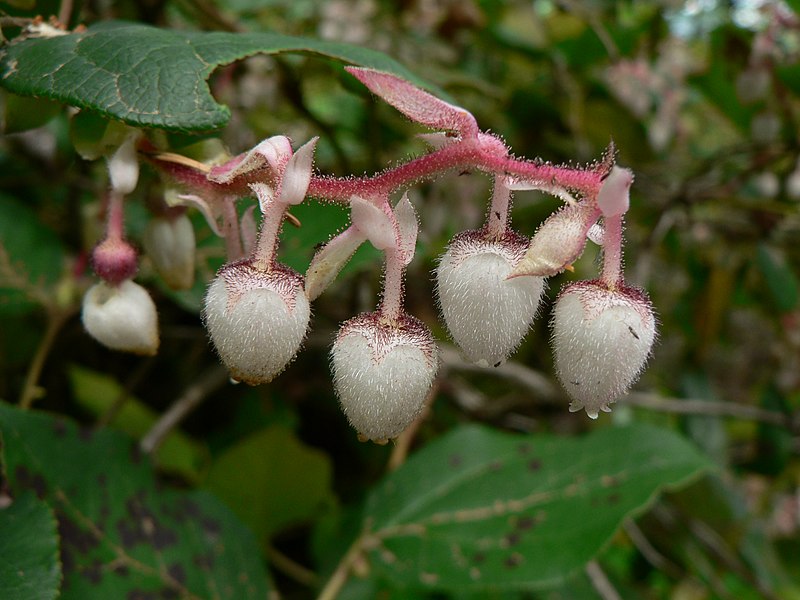
In early summer 5 -15 charming pinkish-white bell-shaped blossoms form along the underside of the flower stalk. Near the base of each blossom, at the point where it joins onto its short stalk, a structure contains sweet nectar – you can taste it if you bite into that portion.
The twigs are a red-brown color and can live up to 16 years or even more, but they only bear leaves in the first few years.
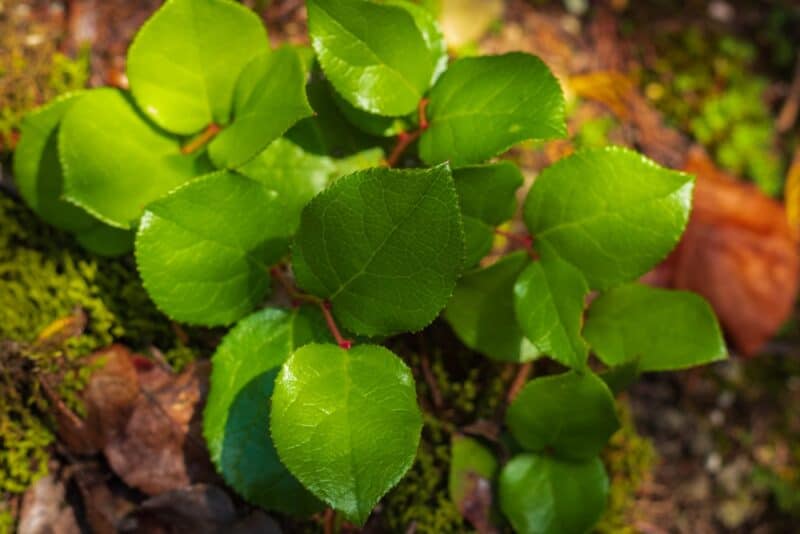
Salal’s leaves are evergreen, thick, leathery and oval with a dark glossy green on top and duller green underneath. Finely serrated, the leaves generally live from 2 to 4 years before being replaced. They gradual bronze during the summer and by autumn there are many bronzed-red leaves enhancing the beauty of the plant.
A great use of salal leaves is as a substitute for bay leaves for flavoring soups and stews. Armloads of wet salal branches were placed over red-hot rocks at the bottom of traditional cooking pits, serving to both protect the food and add flavor during the cooking process. The leaves of the salal plant were important enough that some of the indigenous languages had separate names to distinguish berries from the leafy branches.
Herbalists found the leaves of salal contain phenolic acids (such as gallic and tannic acids) which have a drying effect on congested tissue. One author likened the action to the squeezing of a sponge (sponges being much less effective when they are waterlogged). Our lungs and sinuses, for example, need to be moist like a sponge but not too wet (congested). Salal’s anti-inflammatory and astringent effect also extends to the throat, upper intestines and the urinary tract via the bloodstream.
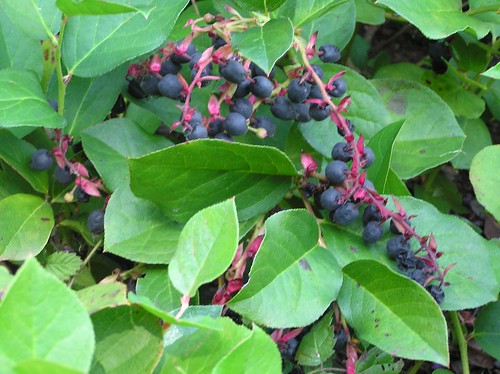
Salal’s fruit (actually pseudo fruit) is reddish to dark blue with a rough surface, nearly spherical. Each has an outer layer with about 126 tiny brown seeds within it. These berries usually ripen from early August through September, staying on the plant into the fall. They can be found in well-drained acidic soils, often in shaded forest areas.
Salal berries were an important food source for the Native American tribes such as the Salish. Traditionally the berries were harvested, eaten fresh or preserved for winter by drying them. Both the leaves and the berries were used for medicinal purposes as an anti-inflammatory, to support digestion and many more.
The unique flavor of these berries has also been embraced by contemporary culinary practices where they are processed to various forms from teas to jams to intricate desserts. They are high in natural pectin for the jam and their nutritional value is excellent (high in antioxidants, vitamins and other beneficial compounds).
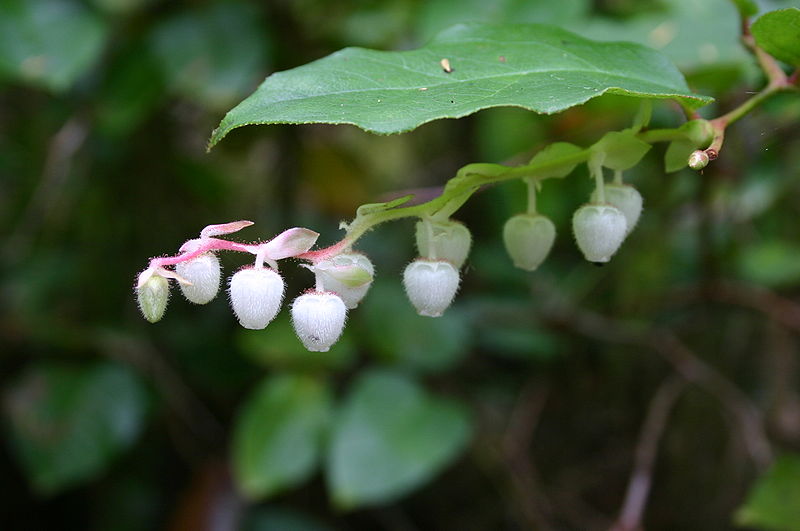
Salal leaves by themselves are so extravagantly beautiful they are in demand by florists as a complement to flowers arrangements. One of the many plants from the “understory” of the forest, salal is so commonplace as to be almost unnoticeable. And yet Laurie Ricou wrote a whole book about Salal. She states the “high-gloss leaves and delicate salmon-white flowers are compelling, and as a staple of the floral greens industry, its impact is global”.
Many Flower Essence practitioners associate the Navajo (Dine) teachings of “Walk in Beauty” with Salal blossoms. The lesson is: “Walking the beauty way enlivens your ability to experience beauty, presence and equanimity and enhances your sense of well-being”.
We hope you take some time to acquaint yourself with Gaultheria shallon as one of the innumerable blessings the plant world shares with us.
